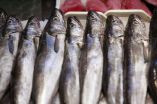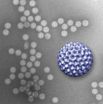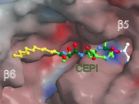(Press-News.org) What is most important when buying fish: the price, the country of origin, whether it is fresh or frozen or whether it is wild or farm-raised? The average Spanish consumer prefers above all that their fish comes from Spain, according to a study published in the 'Food Quality and Preference' journal. Spain is the largest producer of fish in the European Union but in recent years its population has consumed less fish, especially seafood.
A team of scientists brought together nearly 900 consumers from nine Autonomous Communities (Andalusia, Asturias, the Balearic Islands, the Canary Islands, Cantabria, Catalonia, Galicia, Madrid and Murcia) to analyse their preferences when buying fish. Evaluated factors included the country of origin (Spain, Morocco and Norway), whether they were fished or farm-raised, their conservation method (fresh or frozen) and the price (6€/kg, 12€/kg and18€/kg).
The results reveal that the place of origin (Spain in this case) is the most important factor for consumers when buying fish. The statistical analyses outline that the relative importance of the country of origin stands at 42.96%, whereas the other three variables are less than half: 20.58% for storage conditions, 19.13% for price and 18.01% for whether the fish is wild or farm-raised.
Published in this month's 'Food Quality and Preference' journal, the study suggests that preference for national fish could be attributed to reliability that it offers the consumer. Spain has a longstanding tradition of fishing and so homeland products are considered to be fresher than their imported counterparts. A tendency to consume more fresh than frozen fish also seems to point in this direction.
"In general, the native, wild, fresh and low to medium priced (6-12 €/kg) fish is the preferred option amongst Spanish consumers," as explained to SINC by Anna Claret i Coma from the Institute for Research and Technology in Food and Agriculture (IRTA) and co-author of the study.
The researcher also highlights the fact that the majority of those surveyed prefer wild fish as opposed to farm-raised fish: "Data like such suggests that effective informative strategies need to be put in place to promote aquaculture fish consumption as a way of reducing over-exploitation of natural fishing resources."
The study recognises that Spain is the largest producer of fish in the European Union in terms of volume and one of the Member States than buys the most fish too. But, it warns that consumption "could experience a considerable decrease in the future as a consequence of food habit changes observed in recent years."
Data from Spain's Ministry of Agriculture, Food and the Environment confirm a decrease in consumption and an increase in price. Consumption of fish in Spain dropped from 1,254 million kilograms in 2010 to 1,230.2 million in 2011: a decrease of 1.9%. Seafood saw the largest decrease (4.3%) and only a growth in tinned fish sales was observed (1.8%).
However, Spanish households spent 9001.4 million euros on fish products in 2011 compared to 8750.4 million the year before. The average consumer profile is a person over 50, who is financially stable and with middle-aged or older children or rather couples without children or retired people.
Although they do not consume much fish, young people living away from home have increased their purchasing of this food the most with a rise of 6.6% between October 2011 and 2012.
By Autonomous Community, the largest consumers of fish products during this period were Castilla y León, Galicia and Cantabria, and the least were Extremadura, and, strangely enough, the Balearic and Canary Islands.
INFORMATION:
References:
Anna Claret, Luis Guerrero, Enaitz Aguirre, Laura Rincón, Mª Dolores Hernández, Inmaculada Martínez, José Benito Peleteiro, Amàlia Grau, Carmen Rodríguez-Rodríguez. "Consumer preferences for sea fish using conjoint analysis: Exploratory study of the importance of country of origin, obtaining method, storage conditions and purchasing price". Food Quality and Preference 26 (2): 259–266, 2012. Doi: 10.1016/j.foodqual.2012.05.006.
Participants:
IRTA, Agencia de Gestión Agraria y Pesquera de Andalucía (AGAPA), Universidad de las Palmas de Gran Canaria (ULPGC), IMIDA–Acuicultura (Murcia), el Instituto Español de Oceanografía (IEO-Santander e IEO-Vigo), Laboratorio de Investigaciones Marinas y Acuicultura (LIMIA, Baleares) and Centro de Experimentación Pesquera (CEP Asturias).
Spanish consumers prefer national fish
2012-12-20
ELSE PRESS RELEASES FROM THIS DATE:
MIT researchers discover a new kind of magnetism
2012-12-20
CAMBRIDGE, Mass. -- Following up on earlier theoretical predictions, MIT researchers have now demonstrated experimentally the existence of a fundamentally new kind of magnetic behavior, adding to the two previously known states of magnetism.
Ferromagnetism — the simple magnetism of a bar magnet or compass needle — has been known for centuries. In a second type of magnetism, antiferromagnetism, the magnetic fields of the ions within a metal or alloy cancel each other out. In both cases, the materials become magnetic only when cooled below a certain critical temperature. ...
A nanoscale window to the biological world
2012-12-20
If the key to winning battles is knowing both your enemy and yourself, then scientists are now well on their way toward becoming the Sun Tzus of medicine by taking a giant step toward a priceless advantage – the ability to see the soldiers in action on the battlefield.
Investigators at the Virginia Tech Carilion Research Institute have invented a way to directly image biological structures at their most fundamental level and in their natural habitats. The technique is a major advancement toward the ultimate goal of imaging biological processes in action at the atomic ...
Production of 5-aminovaleric and glutaric acid by metabolically engineered microorganism
2012-12-20
We use many different types of chemicals and plastics for the convenience of our everyday life. The current sources of these materials are provided from petrochemical industry, using fossil oil as a raw material. Due to our increased concerns on the environmental problems and fossil resource availability, there has been much interest in producing those chemicals and materials from renewable non-food biomass through biorefineries. For the development of biorefinery process, microorganisms have successfully been employed as the key biocatalysts to produce a wide range of ...
Game changing diagnostic & prognostic prostate cancer genetic tests revealed by Jefferson
2012-12-20
PHILADELPHIA—Researchers at the Kimmel Cancer Center at Jefferson (KCC) (insert link to "Kimmel Cancer Center at Jefferson" www.kimmelcancercenter.org) have developed potentially game-changing diagnostic and prognostic genetic tests shown to better predict prostate cancer survival outcomes and distinguish clinically-relevant cancers.
The team, led by Richard G. Pestell, M.D., Ph.D., Director of the KCC and the Chair of the Department of Cancer Biology at Thomas Jefferson University, report their preclinical findings from a blinded, retrospective analysis of over 350 ...
Can observations of a hardy weed help feed the world?
2012-12-20
As the human population increases, so too do the demands and stresses on agriculture. In the January 2013 issue of International Journal of Plant Sciences, Penn State University Waller Professor of Plant Biology Dr. Sarah Assmann explores how the responses to environmental stresses by one small, genetically diverse plant species might illuminate possible approaches to addressing growing human demand for crop products amid decreasing resources.
In the article, Dr. Assmann describes how human population growth presents new challenges to twenty-first-century agriculture, ...
Serendipity points to new potential target and therapy for melanoma
2012-12-20
A University of Colorado Cancer Center study in this month's edition of the Journal of Investigative Dermatology describes a new target and potential treatment for melanoma, the most dangerous form of skin cancer. MicroRNA can decide which genes in a cell's DNA are expressed and which stay silent. Melanoma tends to lack microRNA-26a, which makes the gene SODD go silent.
"It's a double negative," says Yiqun Shellman, PhD, investigator at the CU Cancer Center, associate professor at the CU School of Medicine, and the study's co-senior author. "miR-26a works to stop the ...
Cultural, social factors identified as barriers to minority participation in stem cell donation
2012-12-20
New research examining the role of race and ethnicity in an individual's decision to become a donor for hematopoietic cell transplantation (HCT) identifies several factors associated with varied participation rates in national donor registries across racial/ethnic groups. Results of this first-of-its-kind study are published online today in Blood, the Journal of the American Society of Hematology (ASH).
Hematopoietic cell transplants serve as valuable treatments for a range of blood disorders, as they generate new, healthy blood cells to replace diseased cells. While ...
Poison for cancer cells
2012-12-20
This press release is available in German.
In their quest for new agents, pharmaceutical researchers test millions of substances all over the world. They like using color-forming reactions to identify new molecules. However, in intensively colored solutions or in the case of mixtures with multiple substances these tests fail. As part of his doctoral thesis, Martin Stein, member of staff at the Chair of Biochemistry at the Technische Universitaet Muenchen, developed a testing reaction based on magnetic resonance data. It helps find a specific pharmaceutical molecule ...
Clean air: New paints break down nitrogen oxides
2012-12-20
The Seventies: Smog alert in the Ruhr area, acid rain, dying spruce trees in the Bavarian Forest. In those days, the solution was filter systems for the smokestacks in the Ruhr area. Today, people in the urban areas are suffering from high levels of pollution that is being caused by, among other things, automotive traffic. Particularly undesired: the nitrogen oxides (NOX). In the meantime, the European Union tightened the limit values even further; in many communities they are being exceeded. Michael Hüben of the Fraunhofer Institute for Molecular Biology and Applied Ecology ...
Aldrich Materials Science discovers liquid-free preparation of metal organic frameworks
2012-12-20
St. Louis, MO – December 18, 2012 – Researchers at Aldrich Materials Science, a strategic technology initiative of Sigma-Aldrich Corporation (NASDAQ:SIAL) have discovered an innovative way to design an important class of three-dimensional (3D) hybrid structures, Metal Organic Frameworks (MOFs), under completely liquid-free conditions. High purity MOF products prepared by the liquid-free process may be ideally suited as rare earth containing materials for sensors and detectors, electronic or magnetic materials. The discovery also extends liquid-free preparation techniques ...




